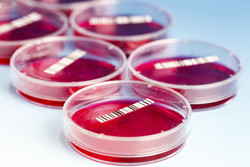Pluripotent stem cells for heart conditions
Long QT syndrome (LQTS) is an inherited or acquired heart disorder predisposing affected individuals to fatal cardiac arrhythmias. Patients with LQTS have delayed ventricular repolarisation, registered as a prolonged QT interval on their electrocardiograms. The majority of genetic cases of LQTS result from mutations in potassium voltage-gated channel genes. Mutation in KCNQ1 causes LQT1, and mutation in KCNH2 causes LQT2. LQT1- and LQT2-hiPSCs possess the disease phenotype and can be used to understand the molecular mechanisms of this syndrome. The EU-funded project 'Human pluripotent stem cells for modeling and correcting long-QT syndrome' (HPSCLQT) studied LQT1- and LQT2-causing mutations. Project scientists successfully corrected the mutations in patient-derived hiPSCs using a gene targeting approach based on homologous recombination. They studied the electrophysiological properties of derivative cardiomyocytes and found that the LQT2 mutation is linked to the electrophysiological phenotype. After that, the researchers tested the pharmacological response of derivative cardiomyocytes to specific molecules. The LQT2-causing mutation increased drug sensitivity, possibly enhancing arrhythmogenic risk in affected patients. Finally, the team introduced the LQT2 genetic lesion in human embryonic stem cells (hESCs). Targeting the mutation in hESCs confirmed the causality of a specific genetic defect. Using LQT2 isogenic lines, it also became possible to study the molecular mechanism of action of this mutation. The pathological mechanism includes a trafficking defect of the mutated channel, with potential involvement of proteasomes in clearance of the defective protein. The scientific approach used in HPSCLQT proved a specific genotype–phenotype correlation. For the first time, evidence has been provided that isogenic pairs are essential for meaningful interpretation of a genetic cardiac condition. New human LQTS cell models also offer important in vitro systems with potential applications to drug discovery, drug safety pharmacology and drug sensitivities studies.







